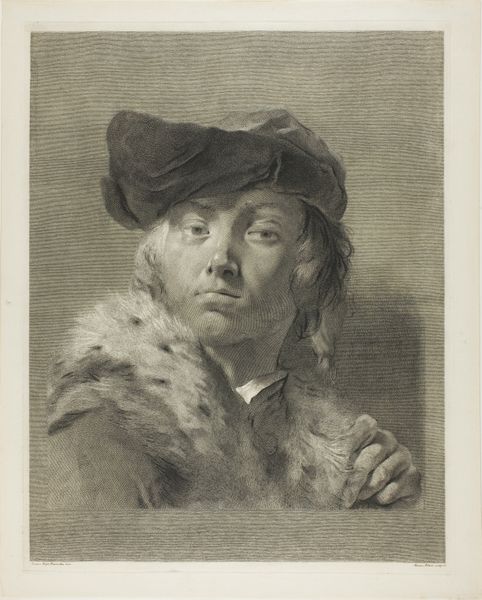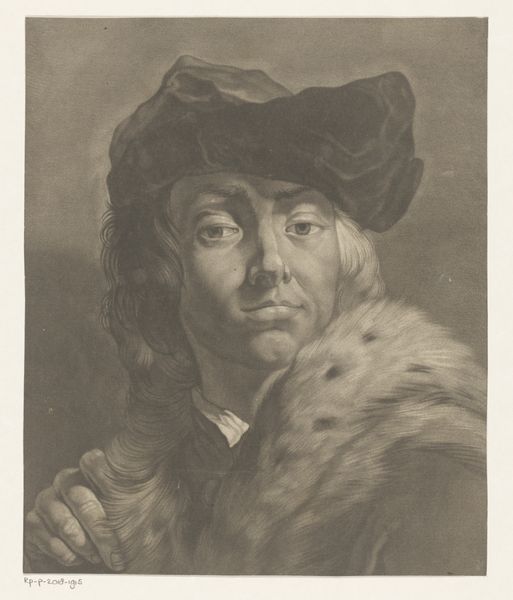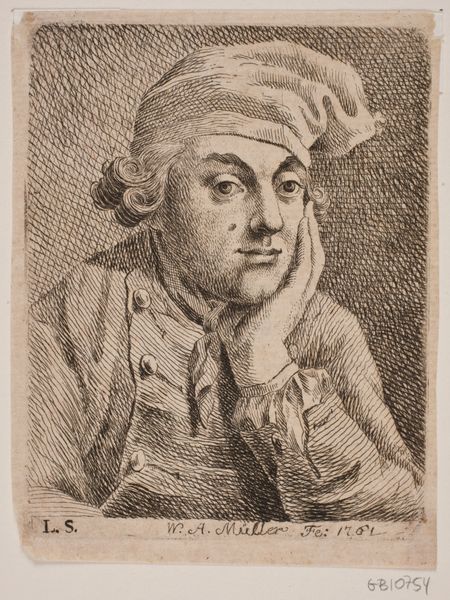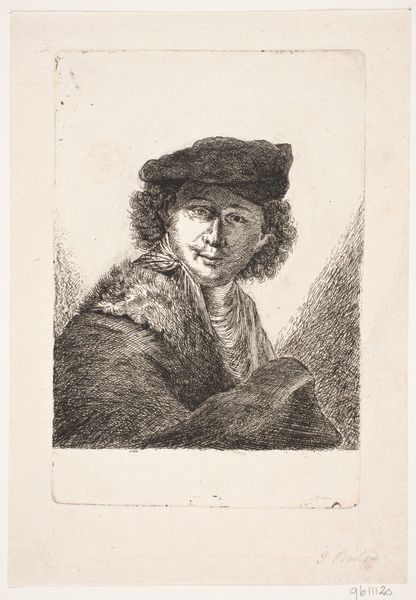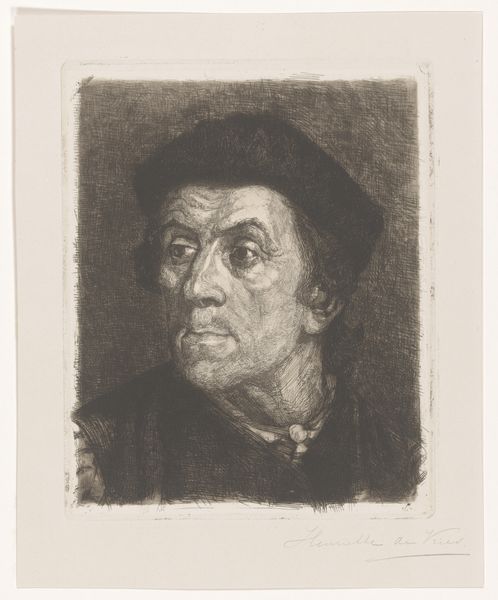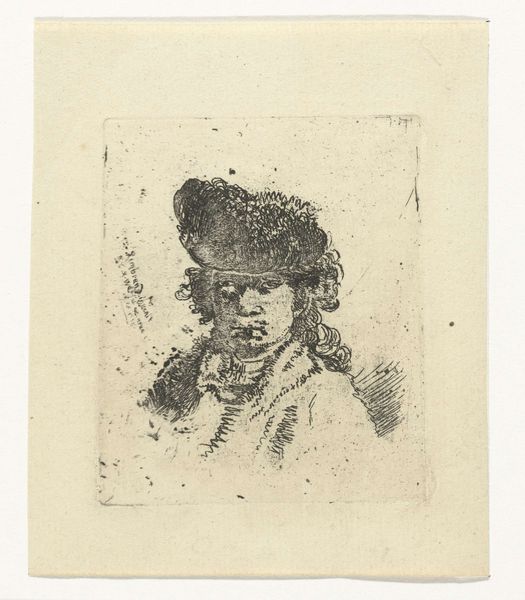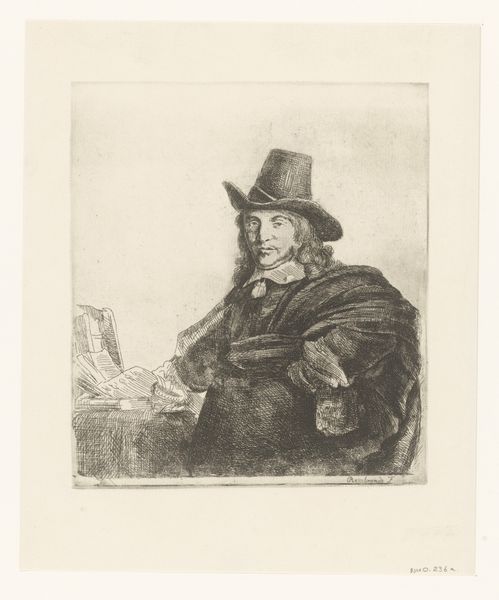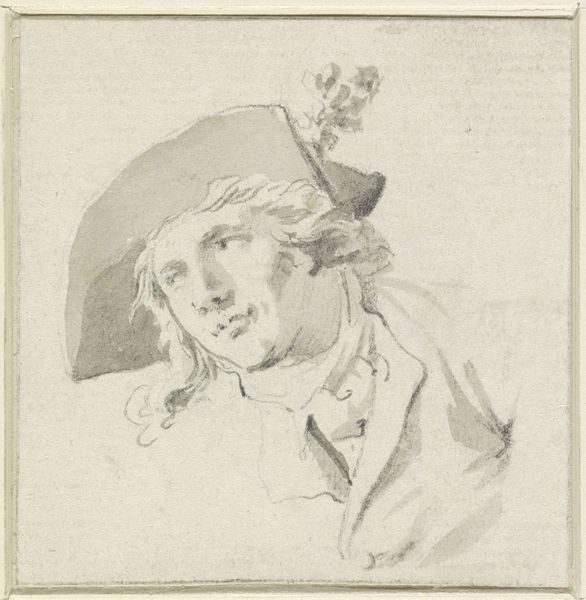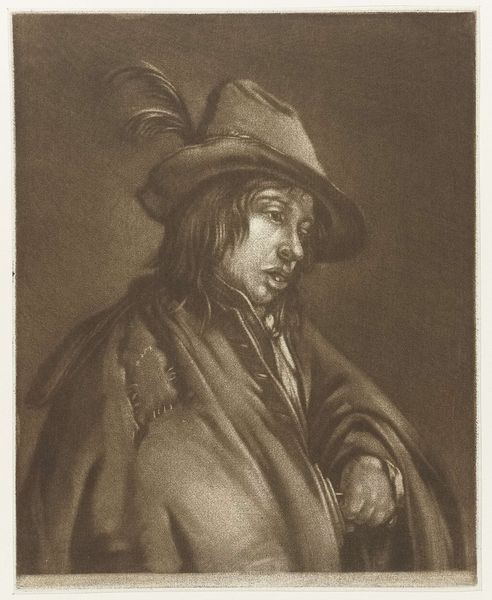
print, engraving
#
portrait
#
baroque
# print
#
framed image
#
portrait drawing
#
italy
#
engraving
Dimensions: 17 7/8 x 14 in. (45.4 x 35.56 cm) (plate)20 1/16 x 14 11/16 in. (50.96 x 37.31 cm) (sheet)
Copyright: Public Domain
Editor: Here we have Giovanni Marco Pitteri's "A Man with a Beret and a Fur Collar," an engraving from the 1750s. It's struck me how…severe he appears. Almost challenging. What do you see in this portrait? Curator: Well, looking at the attire, it's indicative of wealth, clearly designed to project authority and status within a very rigid social hierarchy. The fur collar, the beret – they aren't simply about warmth. Think about the historical moment: this portrait was produced in Italy. Do you consider how the identity of marginalized people such as jews, people of color and the working class where affected by those in positions of power in this artwork? Editor: I hadn't considered it in that light. I was so focused on the individual. I mean, shouldn't portraiture reflect something unique about the subject? Curator: And what constitutes 'unique' when the entire visual language of the portrait is constructed to uphold existing power structures? Even the shadows and lighting contribute; notice how the face is partially obscured, creating a sense of mystery, of inaccessibility, which would not be offered to any average man. I urge you to consider which average man and woman were and weren't given an audience. Do we really "know" this person? Or is it a calculated performance? Editor: I guess I was seeing it as a representation of a person, not the representation *of* power, or rather the performance of power. It really changes how I see the artwork, thinking about it as more than just one man, but part of a larger structure. Thanks. Curator: Exactly. It is about acknowledging art as a dialogue with society. Always consider that art and its surrounding political forces affect people, either the figure or the potential spectator. Editor: That makes a lot of sense. I'll keep that in mind moving forward.
Comments
minneapolisinstituteofart almost 2 years ago
⋮
A student of the renowned painter and draftsman Giovanni Battista Piazzetta (1682–1754), Marco Pitteri was an accomplished and sophisticated reproductive printmaker in Venice in the 18th century. Pitteri was prolific, producing over 450 prints in his lifetime. This includes some 150 prints after Piazzetta's drawings and paintings, which established not only his own reputation, but can largely be credited for promoting Piazzetta's international fame. Piazzetta's highly finished and inventive character heads and portrait drawings were prized by Venetian collectors and became celebrated across Europe. Pitteri developed an innovative etching and engraving technique that skillfully replicated Piazzetta's soft, crumbly handling of black and white chalk. A Man with a Beret and a Fur Collar, which reproduces an early self-portrait drawing by Piazzetta, encompasses all the sought-after qualities of Piazzetta's character heads and Pitteri's printmaking. In appearance and pose, Piazzetta created a quintessentially 18th-century figure. He is a blend of nature and fantasy, and strikes an evocative pose that is simultaneously animated and blasé. Pitteri, in turn, imparts an extraordinary sensual richness to the print surface, depicting the subject with vibrant softened lines and an impressive range of tones. He also deftly distinguishes a range of textures in his technique, such as the fur of the collar, the velvety beret, and the smooth thick flesh of the sitter's face.
Join the conversation
Join millions of artists and users on Artera today and experience the ultimate creative platform.
